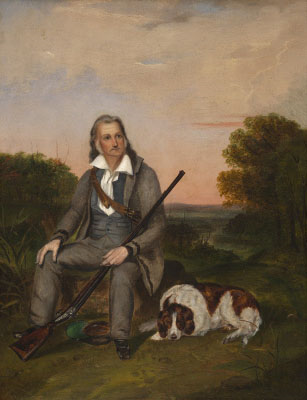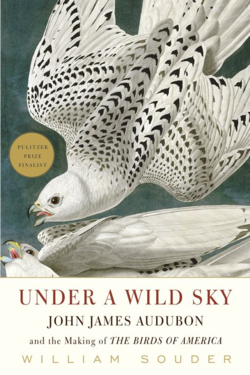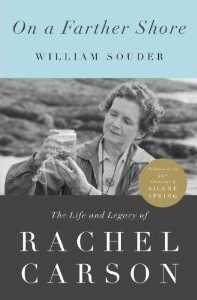Three Questions with William Souder
Beginning with A Plague of Frogs (2000), William Souder has written about science and scientists. His work has received many awards: Souder’s 2004 biography, Under a Wild Sky: John James Audubon and the Making of the Birds of America, was a finalist for the Pulitzer Prize. We recently talked with Souder about his work.
Q: Your biography of John James Audubon was really well received and particularly liked by many of the National Portrait Gallery staff and friends of the museum. What moved you to write about Audubon after so many decades since the last biography of him had been written?
WS: I think there is always an opportunity in biography to look at someone's life in a new way—to examine the context of a life and try to answer the question of not only what someone did when he or she was alive, but why. In Audubon's case, I think his life was shaped first and foremost by his prodigious talent and his desire to depict birds as if they were alive. And he worked in a time when the study of natural history was a participatory undertaking. Audubon loved being in the field. But he was also the product of the circumstances of his illegitimate birth and his arrival in America from France under an invented identity. His given name was Jean Rabin, later changed to Jean Audubon. In pretending he was John James Audubon when he got to this country, he was free to invent who that person was. And except for his absolute honesty in portraying birds, Audubon was always an unreliable narrator. That makes him tricky to know—something that is tempting to a biographer.

Q: The Audubon you write about is an interesting guy, but at times it is difficult to be sympathetic to the man, although he was talented and intelligent. For example, he left his wife alone for lengthy periods, and he was not very nice to animals. Are these twenty-first-century oversimplifications, or did you find a greater, more redeeming component to his character in your study of him?
WS: There are aspects of Audubon's life that trouble modern sensibilities. He killed all of the birds he made drawings of—indeed, he shot a great many more birds than was strictly necessary. Audubon liked to hunt. But in this regard he is not so different from many contemporary ornithologists whom I have met, as lot of them have been drawn to this science because they started out as bird hunters. That said, Audubon had a utilitarian view of nature. He believed that birds and other animals were on earth to be at the disposal of humans, and he sometimes used wildlife carelessly, even wantonly. I don't think that he or anyone else in the time he lived would have understood this as a moral problem. With respect to his personal life—it was complicated. I think his marriage to Lucy was a mostly happy one—they were deeply in love with each other—but their long forced separations were a great trial for both, and those times were fraught with misunderstanding and jealousy. The fact that they were eventually reunited after Audubon’s several years of work on the engraving and publication of The Birds of America—which took place in Edinburgh and London—I think shows how truly unbreakable their bond was.
Can you tell us about your most recent work on Rachel Carson? You intuit well over these people of science. What draws you to them?
WS: My interests are science—especially biology—history, and the environment. Audubon's life touched on all of these interests in a way that made me feel a kinship with him. The same was true for the subject of my more recent book on Rachel Carson. Carson's life was really the embodiment of everything that fascinates me as a writer—including the fact that she was a writer, too. Like all writers, Carson was compelled to say what she thought about the world, about life. And she left behind a long, intimate paper trail. Like Audubon, Carson was a letter-writer. Nothing is more valuable to a biographer than correspondence. It tells you where your subject was at a given point in time, and more important, what he or she was thinking and feeling. I visited many places that both Audubon and Carson traveled to in their lifetimes, and occasionally I could almost feel their presence—Audubon on a rainy night in the cobbled streets of Edinburgh or Carson walking on the sand under a blazing sun at Shackleford Banks in North Carolina. But I felt absolutely closest to both of them when I was sitting in the archives at Harvard or Yale and reading their letters. Audubon and Carson both left important legacies, and in Carson's case this has a lot to do with the reaction to the publication of her book, Silent Spring, in 1962. That's when people began choosing the sides that animate our ongoing debate over environmental matters to this day. So she is an unusually relevant ghost—the sort that haunts all of the best biographies. Right now I'm in the early stages of researching a biography of John Steinbeck—a writer with a keen interest in biology, whose life followed the momentous arc of the twentieth century. For the present, we're still getting acquainted, but I feel certain that soon enough we'll be on the closest possible terms.
Interview: Warren Perry, Catalog of American Portraits


